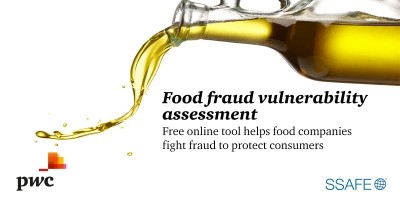Food fraud: Which ingredients are most vulnerable?

Economically motivated adulteration – or food fraud – may or may not be inspired by mal intent, but the threat to human health is the same, whatever the motivation, when ingredient traceability is stripped away.
Markus Lipp, senior director of food standards at US Pharmacopeia, says that the organisation’s food fraud database, which collates international reports of food fraud, is often a first step in assessing the most vulnerable links in the food supply chain.
“We learned when putting together the database that melamine had already been used as an adulterant in the past – but in fish feed in the 1970s, however, before it hit wheat gluten and milk powder,” he said.
Six children died and 50,000 were hospitalised when melamine was illegally added to Chinese infant formula to boost apparent protein content in 2008, a year after thousands of North American pets were reported to have died from melamine-contaminated wheat gluten in pet food.
“It becomes obvious that some areas may require more attention than others,” said Lipp. “For dairy products, there are reports of contaminated milk products in India, for example, and we haven’t seen such problems in the United States or Europe.”
What’s most vulnerable?
One of the problems with trying to prevent food adulteration is the huge number of different ingredients used in the food industry – it is never be possible to test them all – and the target constantly changes.
“The whole scenario is a risk-based scenario. As in life, there are never enough resources to do everything. So we need to ask, where is the highest level of vulnerability?”
While dairy has gained notoriety following the melamine incident, other ingredients that are also common targets for fraudsters include olive oil, which can be mixed with other refined oils, ground spices, fruit juices and anything powdered or in paste form.
Profitability
Lipp says that an ingredient’s vulnerability to fraud involves a matrix of issues. First and foremost, the more money that can be made by producing something more cheaply, the more likely it is to be adulterated. Therefore, problems of supply and demand may be an early clue.
“One consideration is how much supply and demand can get out of sync,” said Lipp. “…A few years ago, the only way to get açaï berries was to climb up in the palm trees in the jungle and pick them.”
Especially as a fruit paste, he said criminals quickly spotted the potential for blueberries to be passed off as (more expensive) açaï berries.
However, he added that feasibility also comes into consideration. “If it requires really specialist knowledge or specialised equipment it may not happen.
“…It is very hard to paint a horse like a cow but it is totally different when you have a patty. Nobody can tell from looking at a burger patty whether there is 10% horse meat in it or not, but everyone can tell it in a meadow.”
Aside from the food fraud database, USP is also the organisation behind the Food Chemicals Codex, a compendium of ingredient monographs and tests to ensure the quality, purity and safety of more than 1,100 food ingredients. This allows consistent analysis of ingredients anywhere in the world, regardless of what the potential adulterant may be.
“It is very easy to look for melamine or horse meat or pesticides – that is wonderful and necessary,” said Lipp. “However, it is a more sensible approach where possible to test the product for what is supposed to be there and to come up with specific criteria.”
























